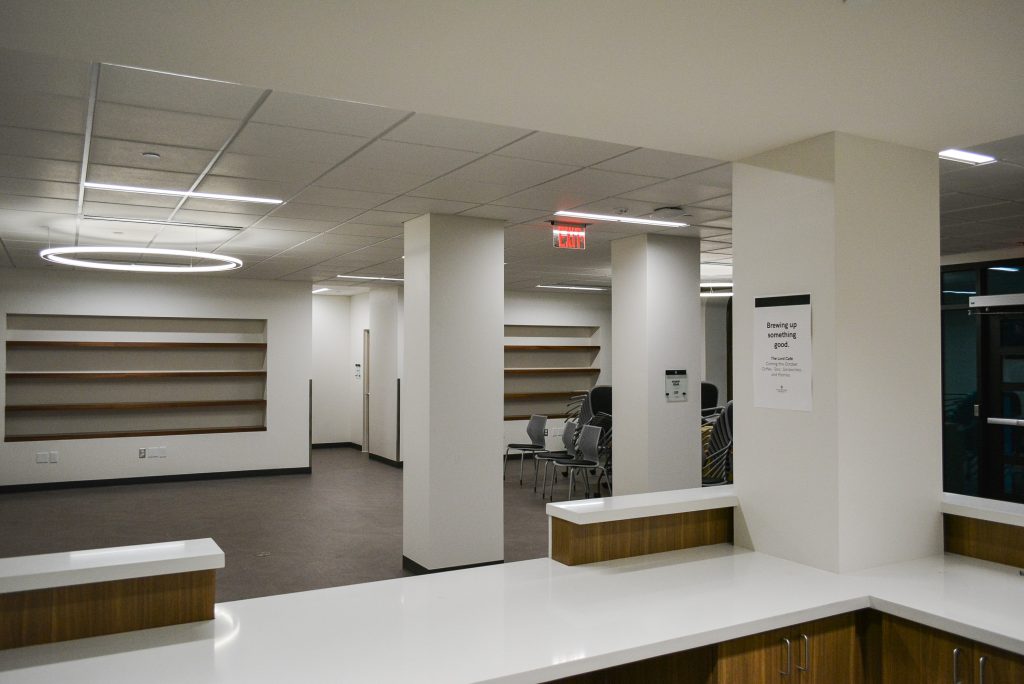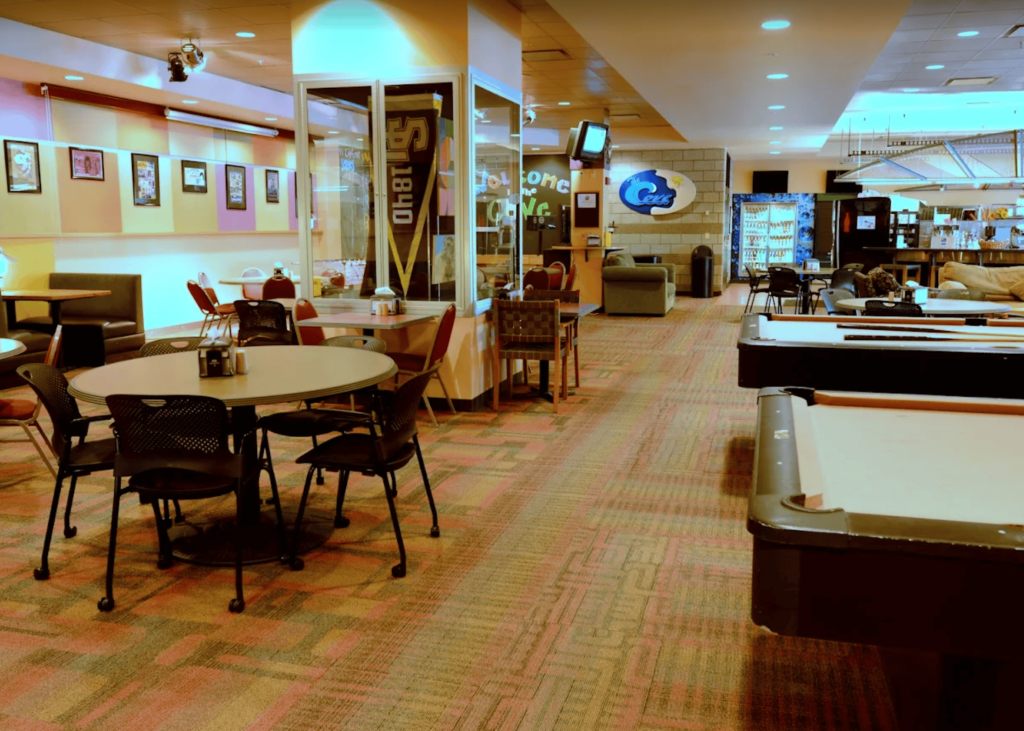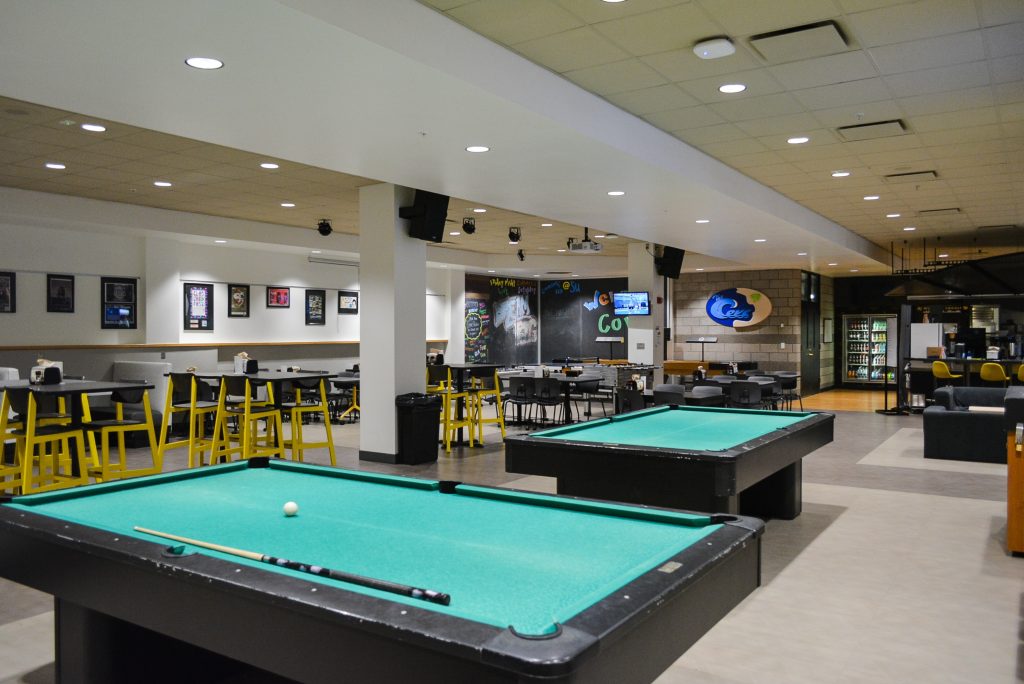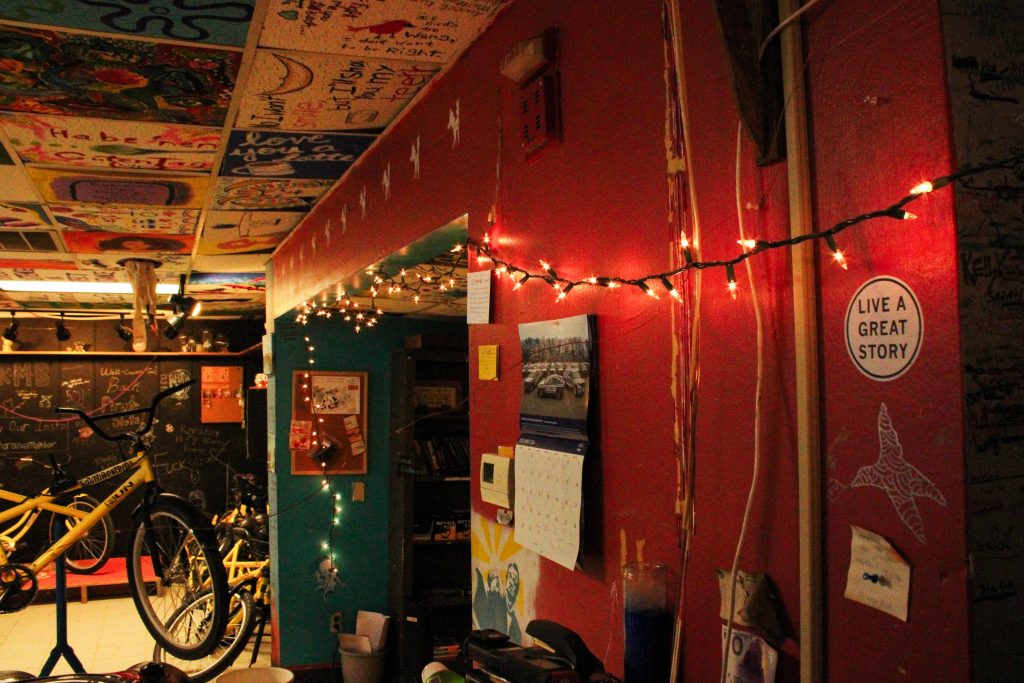Minimalization of Campus Spaces: Where Did the Color Go?
Share

Construction on the renovations in Mood-Bridwell Hall was completed over the summer, and this August, students and faculty alike returned to their first meetings and classes in the redecorated historic building, often described as an ‘anchor building’ defining the characteristic, historic look of Southwestern University. But while students and staff were inhabiting the modern, clean classrooms and office spaces, visitors to Mood-Bridwell all seemed to be asking the same question:
Where did all the color go?
The outside of the building retains the historic charm, but the hallways inside and the common areas meant to serve as coffee lounges and seating areas are all the same shade of white or brown. And this design trend isn’t new, either—in 2023, the Mabee Commons and the Cove underwent similar renovations, leaving the spaces greyer in color, feeling emptier.

Before 2023, the Cove featured warmer-color walls and wooden tables with the names of former students etched in. Mood-Bridwell was home to several “lounges”, comfortable study areas where students and faculty could work. These common spaces felt like lively gathering places at the heart of campus, and it’s hard to know what’s been gained in terms of personality.
Other students struggle to see themselves spending casual time in such minimalist common areas. Many wonder how they will be expected to make their mark on the university when the go-to places for campus life are so devoid of any signs of students having been there.
Freshman Aspen Boucher echoed these feelings, claiming that their group of friends doesn’t use the Cove, and they didn’t feel drawn to it outside of the chance to sit around a circular table with classmates. “Spending money doesn’t need to be the thing that brings you together with other people,” Aspen said, adding that they’d prefer to see “a combination of a multi-use, communal space” as the center for student life at Southwestern.
Senior Elvis Marin agreed that the coziness of places like the Cove “were nice”, but thought the renovations were important: “They were old, the couches would sink in a lot.” Sophomore Adriana Salazar agreed with the need for updated campus spaces, saying that the renovations were “essential to keeping campus updated and looking fresh.”

However, all these students shared something in common. The Cove and other campus common areas have been used less and less over the years, with some Freshman not being drawn to use it at all beyond buying food. With the design of Mood-Bridwell’s interior, it’s hard not to ask if new common areas like the upcoming coffee lounge, with the blank, undecorated and unwelcoming walls aren’t destined for the same treatment.
To answer these questions about the future of Southwestern’s student spaces, I spoke with Dr. Bob Bednar, a Professor of Communication Studies and director of the Placing Memory project, a faculty-student research initiative charting the stories of historic locations in and around Southwestern’s campus. Dr. Bednar was also a student at Southwestern in the 80’s and has seen firsthand many of the changes made in where students spend their time.
Dr. Bednar recognized this struggle between modernization and campus tradition, saying “It’s hard not to feel like its heart has been emptied out,” but claimed that over time, these historic buildings have changed the ‘sense’ of their design many times. “The Cove people miss wasn’t the first Cove.” Bednar said, “When the Cove was renovated in the early 2000’s, students were involved with that. The people who were in charge of doing it, they talked to students about it and said ‘what do you want, what would make you feel like this is a place I would want to go?’. They had a lot of input into it, and it showed.”

Bednar also commented on other student space projects throughout Southwestern’s history, including the entirely student-run Korouva Milk Bar, the former coffee lounge on campus. He also brought up the ‘Black Room’, a lounge built in Mood-Bridwell before the 1975 renovations. The Black Room served as a social space for black students, and was the launching ground for groups like the Black Student Union, which is still active on campus today.
This long history of students having the chance to create their own spaces has led to a long record of greater student engagement, more student-run organizations, and more use of campus as a gathering place – all things Southwestern University proudly advertises when marketing to high school graduates and incoming freshmen.

While students across the decades have left their marks on Southwestern, many students wonder what more student-influenced common spaces would look like. Marin ‘26 proposed the McCombs campus center’s rooms as the home of more future student-run spaces: “bring the movie room back.” . Salazar ‘28 added that it might be helpful to have a space meant for women, and Boucher ‘29 doubled down on the importance of communal ‘third spaces’ meant for spending time outside of classes, living or work.
As Mood-Bridwell begins to take on a new character of its own, many eyes turn to the emptying spaces across campus and wonder what might be built there – but as the old look of campus is phased out and the new one takes shape, a few questions still linger on the freshly-blank walls and in the echoed voices of students past and present:
What is our place here – and how can our campus remind us that we belong on it?
